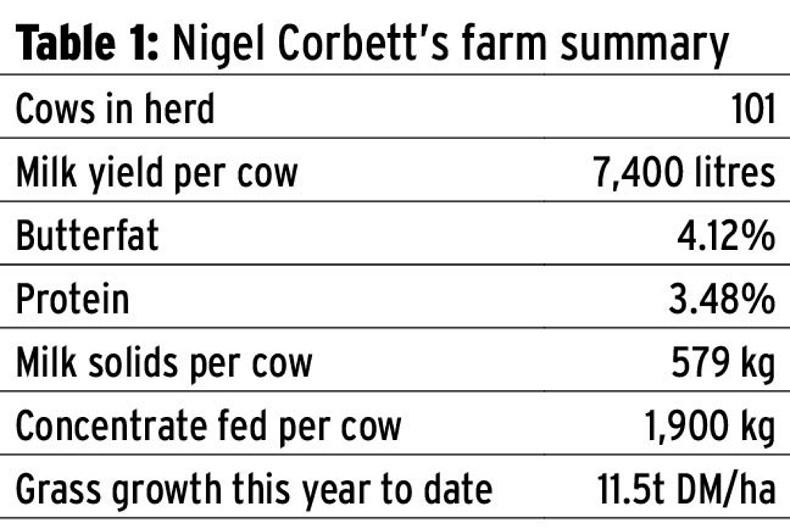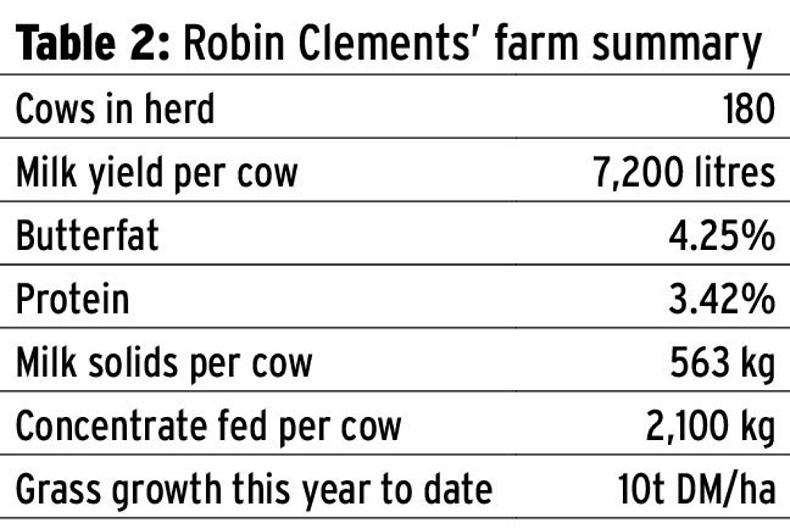The development of two farm businesses that have been participating in the Dairylink Ireland programme over the past three years will be discussed at on-farm open days next month.
Since the Dairylink programme was launched in 2015, the six participating businesses have been focused on maximising the resources available on each farm to lower breakeven costs and increase profitability.
Making improvements to soil fertility, grass and fodder quality, herd fertility and genetics and financial management have been central for all six farms during the first phase of the programme.
Focus on cows
At the open days on 7 and 9 November, demo talks will be given on a range of individual cows that represent what each farmer wants from their herd and a breakdown will be given of recent sales, costs and overall profit for the farm business. With cows calving on both farms this autumn, body condition scores will be assessed on sample cows and an overview of early lactation feeding will be provided.
Sire selection to breed the right cow for each farm system will be focused around an interactive demo on a sample group of heifers. All programme farmers weigh replacement heifers to track growth rates and meet target weights.
Liveweight gains will be calculated for the batch of heifers at each walk and the management of heifers throughout breeding and gestation will be discussed.
Soil fertility
The six programme farmers have made significant improvements to soil fertility in the first two years of the programme.
This will be discussed, along with other steps that have also allowed both grass growth and quality to increase, such as measuring grass and increasing attention to pre- and post-grazing covers. The events are free to attend and everyone is welcome.
Garvaghy Church Rd, Banbridge
Farm walk date and time: 7 November, 11am-1pm
Tightening the calving profile has been one of our main priorities during the project. Calving spread has reduced from eight months in 2015/16 to five months in 2017/18, with six-week in-calf rate increasing from 34% to 55% over the same period.
Culling late calvers and changes to heat detection have been central to improving fertility so far. We have moved from detecting heats by visual observation to using tail paint. Activity meters and a heat detection system have now been installed for breeding this winter.
For longer-term gains, we are selecting sires for fertility, with both EBI and £PLI bulls used on the farm.
Soil fertility
At the start of the project, only 17% of the farm was optimal for pH, phosphorus and potassium. After two years, this had increased to 34% last winter and work is ongoing to improve soil fertility further. There are also plans for more drainage and reseeding, although work was delayed this autumn with wet weather.
Milk from forage has increased from 2,311 litres/cow to 3,178 litres/cow in three years and improvements to grazing infrastructure are ongoing to increase utilisation of grass.
Around 300m of hardcore laneways were built this year. We are also increasing the number of access to points to paddocks and fitting more drinkers for increased flexibility with grazing.
We have restructured bank loans and borrowed £50,000 of additional capital. This is to allow capital investments within the farm business to be paid from borrowings instead of cash reserves, so that money is being set aside in the period of higher milk prices.

Keenogue Rd, Trillick
Farm walk date and time: 9 November, 11am-1pm
We converted from suckler farming to dairying six years ago. Cow numbers increased from 80 to 120 in the first three years and are at 180 at present. As stocking rate increased and as more grass grew on the outfarm, where there are no milking facilities yet, we started zero grazing a group of cows kept indoors full-time.
We have also been focused on improving the quality of both silage and grazed grass and so milk from forage has increased from 1,375 litres/cow in 2015 to 2,533 litres/cow this year. Milk yield has increased by 700 litres over the period and concentrate feed rate has reduced by 200kg/cow.
After two years of a three-year soil nutrient improvement plan, the percentage of the farm with optimal pH, phosphorus and potassium levels has increased from 23% to 45%, with 86% of the home farm at optimal soil nutrient status.
A 64ha outfarm was purchased two years ago and work is ongoing on soil nutrient improvement, drainage, fencing and reseeding. Around 28ha of the new block was reseeded this year, meaning over 70% of it has been reseeded since it was bought.
We moved from an 80/20 autumn- and spring-calving profile at the start of the project to 100% autumn-calving. Herd fertility has improved, with six-week in-calf rate moving from 58% to 72% and calving index has reduced from 395 days to 375 days.
We have been focused on breeding cows for fertility and increased butterfat and protein. The current breeding policy is delivering in terms of improved solids, with increased output and component percentage seen over the three-year period.
